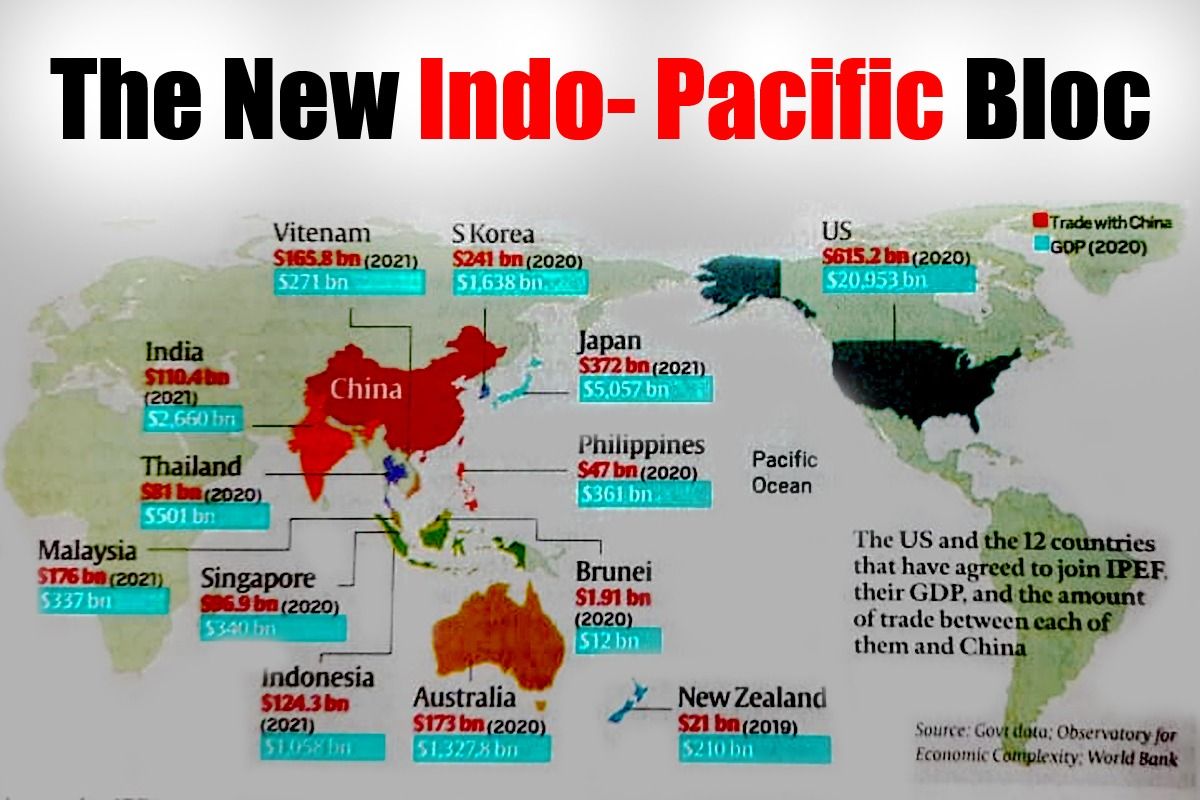When the international platform is full of appeals seeking restraint in the wake of major armed conflict over land disputes, the Chinese laying a claim on India’s Arunachal Pradesh does not sound good news for global peace and stability. Any escalation between the two nuclear-armed nations can be disastrous for the Indo-Pacific region, which is already feeling the heat of the Chinese hegemonic attitude.
The Russia-Ukraine war, Armenia-Azerbaijan border crisis and Israel-Hamas clashes in the recent past have shocked the world, with fears of these fights snowballing into a global conflict, which could match the magnitude of World War II. Russian President Vladimir Putin recently warned the world of being a step away from World War III when he spoke in the context of the Ukraine crisis.[1] Notably, China has claimed a Russian island to be its territory in its New Standard Map.
This demands China refrain from belligerent activities on border and territorial disputes. However, Beijing can be seen engaging in escalating border and land disputes with most of its neighbours. China has been showing military aggression in the China Sea region as it staked claims on islands and marine territories of several countries including Japan, Indonesia, and the Philippines.
In the latest case of escalating border row, Beijing called the northeastern Indian state of Arunachal Pradesh an “inherent part of China’s territory”.[2] India retorted terming Arunachal Pradesh its integral and inalienable part. A few weeks ago, China had set up defence villages in areas bordering Arunachal Pradesh.[3] Against such a backdrop, India’s natural action may lead it to react strongly, which may cause the prevailing tension to grow, and even force major nations to intervene. The US has already slammed China over its Arunachal Pradesh remark.
India has shown a change in its defence attitude in recent years. Its military has resorted to a sharp response to prevent Chinese attempts at trespassing and encroachment inside the Indian border. Nishant Rajeev, a senior analyst at Singapore-based S. Rajaratnam School of International Studies, said military expansion and civilian-military fusion policy on the border by China has led India to build a strong deterrence system. “While nuclear use remains unlikely, tensions along the border complicate this dangerous dilemma,” he said.[4]
China did not even spare its allies. Beijing showed Bolshoi Ussuriysky Island of Russia as its territory in the New Standard Map released in 2023. Moscow chose to tread carefully saying the dispute was resolved in 2008 and it maintains sovereignty over the island.[5] China has been using its military superiority to claim over 90 percent of the South China Sea. This deprives many nations in the region of their marine territorial rights.
While a majority of nations in the region chose not to confront Beijing openly, the Philippines has taken Beijing head-on. The Philippines has received support from the US as it dared to stand up to Chinese “bullying”.[6] China’s expansionist behaviour may lead to escalated conflict in the South China Sea region. Beijing is ceasing to remain a source of peace and stability in the region due to its hegemonic actions, said Carla Freeman, China expert at the United States Institute of Peace.[7]
China has minced no words in expressing its desire to annex Taiwan with the mainland. This has already made the geopolitics around the Taiwan Strait complex and the fears of major military conflict a possible reality. Japan is a major power that is concerned by China’s military aggression in the East China Sea and its claims of the Senkaku island being a Chinese territory.
Japan has begun military expansion amid threats of encroachment on its territory by the Chinese. The latest report by Japan’s defence ministry called Chinese military aggression a matter of serious concern for the international community. They “present an unprecedented and the greatest strategic challenge in ensuring the peace and security of Japan and the peace and stability of the international community,” read the report.[8]
The Chinese flexing military muscle may lead to war with India as well as armed escalations in the China Sea region, said Brahma Chellaney, a fellow at Berlin-based Robert Bosch. He said China continued to stoke tensions with regional neighbours as it seeks to alter the territorial and maritime status quo in the Indo-Pacific. “China has lately become even more aggressive in its expansionism. Chinese regional hegemony is closer than ever,” Chellaney said.
END.
[1] https://www.reuters.com/world/europe/putin-warns-west-russia-nato-conflict-is-just-one-step-ww3-2024-03-17/
[2] https://indianexpress.com/article/india/arunachal-pradesh-part-chinas-territory-chinese-military-9219472/
[3] https://indianexpress.com/article/india/china-moves-its-nationals-into-its-vacant-defence-villages-along-lac-9162217/
[4] https://www.usip.org/publications/2023/05/why-we-should-all-worry-about-china-india-border-dispute
[5] https://www.newsweek.com/russia-breaks-silence-china-map-disputed-islands-182398
[6] https://www.cnn.com/2023/09/29/asia/philippines-defense-secretary-interview-china-tensions-south-china-sea-intl-hnk/index.html
[7] https://www.usip.org/publications/2023/08/china-philippines-tensions-risk-wider-conflict-could-draw-us
[8] https://www.mod.go.jp/en/publ/w_paper/wp2023/DOJ2023_Digest_EN.pdf

Leave a Reply